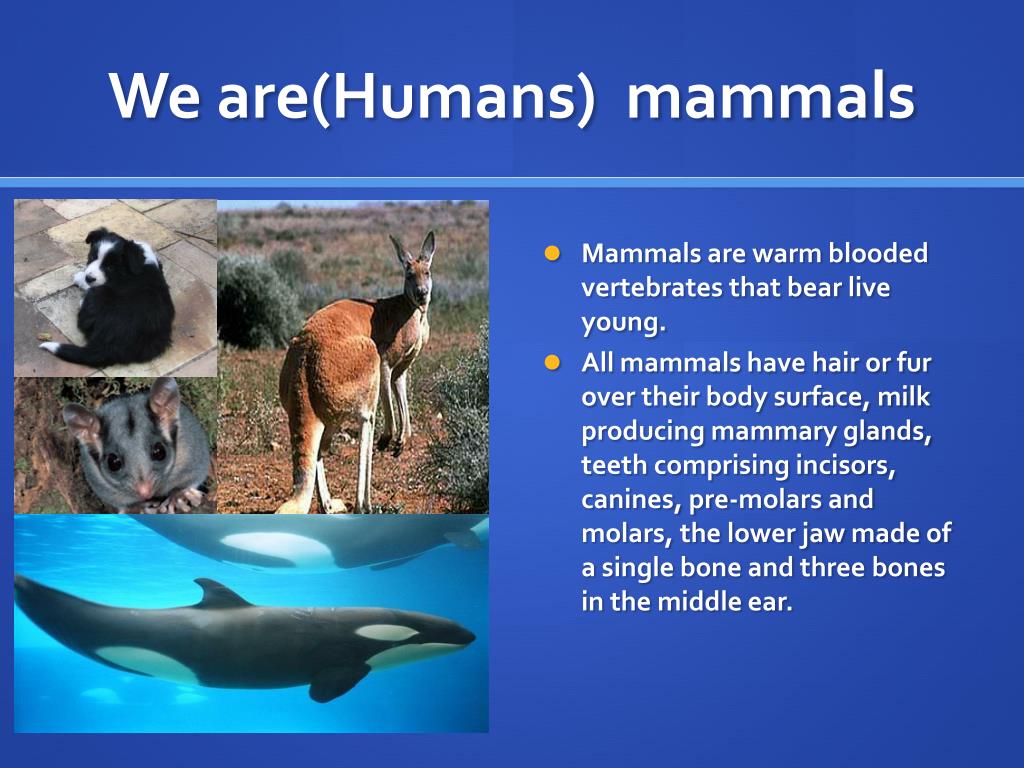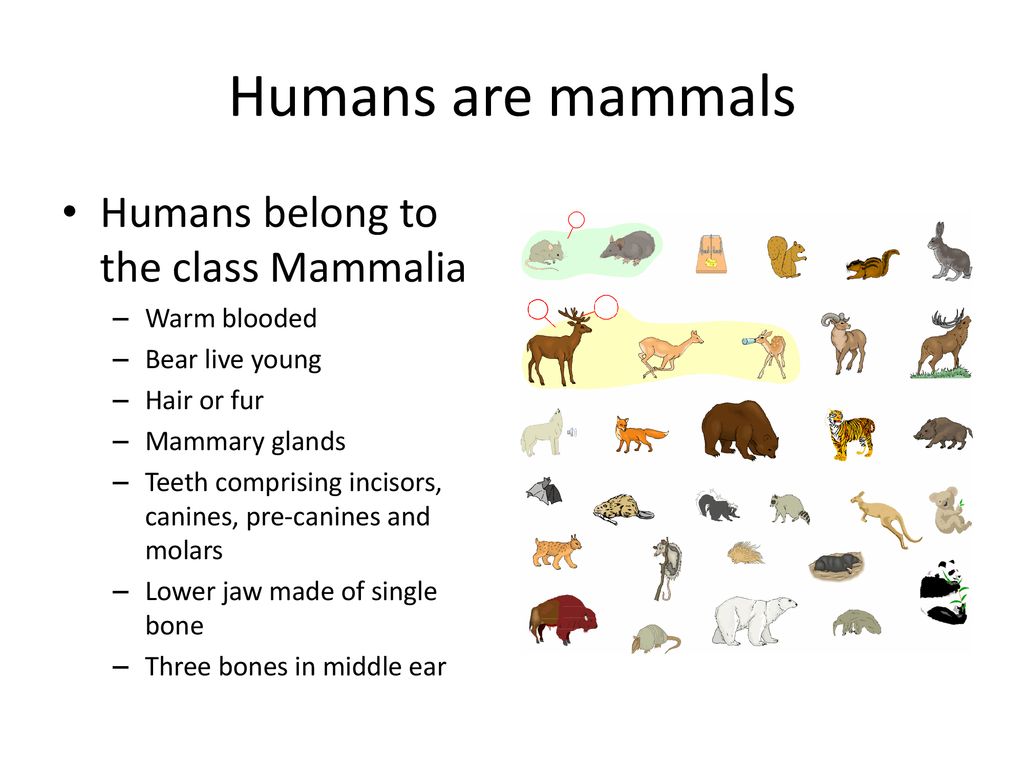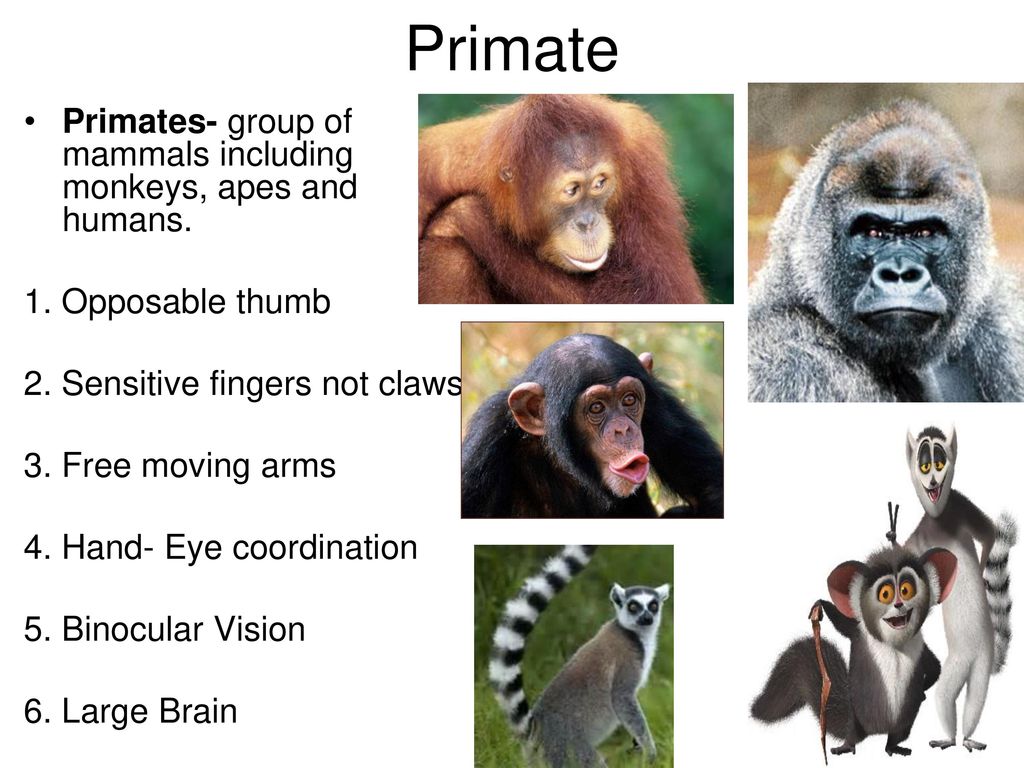Are Humans Mammals - A Friendly Chat
Have you ever stopped to ponder what truly makes us, well, us? It's a pretty interesting thought, isn't it? Sometimes, when we talk about the vast collection of living things on our planet, a question often pops up: are humans mammals? The simple answer, you know, is a definite yes. We really do fit right into that particular group of animals, and there are some very clear reasons why we belong there, as a matter of fact.
It's not just a casual label; there are specific traits that define what a mammal is, and humans happen to possess these characteristics in spades. Think about it for a moment: from the way our bodies manage temperature to how new life begins, we share some truly fundamental features with other creatures we commonly recognize as mammals. So, if you've ever felt a bit curious about where we stand in the grand scheme of biological classifications, you're certainly not alone in that feeling, and we're here to sort of clear things up.
This discussion isn't just about technical terms; it's about seeing the connections we have with the natural world around us. It's about understanding our place, and honestly, it’s quite fascinating to look at the details. We'll explore why humans are indeed mammals, touching on everything from our physical makeup to our ancient family tree, basically giving you a clearer picture of this rather important biological fact.
Table of Contents
- What Makes a Creature a Mammal, Anyway?
- How Do Humans Compare to Other Animals?
- What About Our Ancestors - Are Humans Mammals from Way Back?
- Are Humans Mammals Because of Our Unique Traits?
- Do Humans See the World Differently Than Other Animals?
- Are Humans Mammals - The Nitty-Gritty of Classification?
- Keeping Warm - How Are Humans Mammals in Their Bodies?
- Beyond the Skin - What's Inside When Are Humans Mammals?
What Makes a Creature a Mammal, Anyway?
When we talk about what makes a creature a mammal, there are some pretty clear signs that biologists look for. For one thing, a really big characteristic is having warm blood. This means that, unlike some animals whose body temperature changes with their surroundings, mammals keep a pretty steady internal warmth. Our bodies, you know, work to maintain a consistent temperature, which is a hallmark feature of this particular group. This ability to regulate our own heat is something we definitely share with other mammals, and it’s a pretty neat trick our bodies perform, as a matter of fact.
Another truly defining trait of mammals, and something that absolutely applies to us, is the way new life comes into the world. Mammals typically give birth to live young, rather than laying eggs like birds or reptiles do. This is a significant difference, and it’s a process we humans, of course, follow. We don't hatch from an egg; we are born as little beings, already developed to a certain degree, and that's a very mammalian way to start life, basically.
And then there's the feeding of the young. Female mammals produce milk to nurse their babies. This milk, created within the mother's body, provides all the early nourishment a newborn needs to grow and thrive. This act of nursing is incredibly important for the survival and development of young mammals, and it's a characteristic that is absolutely specific to this animal class. So, when you consider these three things – warm blood, live births, and milk production – it becomes pretty clear why we humans fit so neatly into the mammal category, you know?
How Do Humans Compare to Other Animals?
It's interesting to think about how much we have in common with other living creatures on this planet. When you really look at it, there are many similarities between humans and other animals that you may have already noticed without even thinking too much about it. For example, we all need to eat to get energy and nutrients, and that's something every animal does. We also all need to sleep to rest and recharge our bodies, which is a pretty universal requirement for living beings, as a matter of fact.
Beyond those basic needs, humans and animals both think, in their own ways, and they communicate. Now, the way we think and communicate might be much more complex in some respects for humans, but the fundamental processes are there across the animal kingdom. Whether it's a dog barking to get attention or a chimpanzee using tools, there's a form of thought and interaction happening. We are also similar in a lot of ways that go beyond just the obvious, you know, shared behaviors like eating and sleeping.
For instance, mammals are a subset of vertebrates, meaning they have a backbone, and thus they have distinguishing characters specific to mammals. Humans have hair, which is unique to the mammalian class. While the amount and type of hair might vary greatly from a furry dog to a human with much less visible body hair, the presence of hair is a key mammalian feature. This physical trait, honestly, sets us apart from birds with their feathers or reptiles with their scales, and it's a clear indicator of our mammalian identity, as a matter of fact.
What About Our Ancestors - Are Humans Mammals from Way Back?
When we talk about our place in the animal kingdom, it's pretty helpful to look at our family tree, so to speak. Humans, known scientifically as Homo sapiens, are a part of a specific group called hominids. This group also includes some of our closest living relatives, like chimpanzees, gorillas, and orangutans. These are all creatures that share a common ancestry with us, and they are, of course, mammals themselves, too. So, our lineage is deeply rooted in the mammalian line, which is pretty cool to think about, you know?
Hominids belong to the biological order of primates. This larger group, primates, includes a whole host of fascinating animals, such as monkeys and apes. So, when we trace our biological connections, we find ourselves nested within this order, which is, in turn, a part of the class Mammalia. This means that not only are we mammals, but our immediate biological family and our broader ancestral group are also mammals. It’s a pretty consistent picture, as a matter of fact.
It's worth noting that while humans are believed to have appeared on Earth around 300,000 years ago, mammals have been present for a much, much longer time – about 200 million years. This means that the characteristics that define mammals have been around for an incredibly long stretch of geological time, and we, as a relatively newer species, simply inherited those traits. We are, essentially, a newer branch on a very, very old mammalian tree, which is a pretty humbling thought, honestly.
Are Humans Mammals Because of Our Unique Traits?
While we share many fundamental characteristics with other mammals, humans also possess some traits that make us, well, quite unique within that group. For example, Homo sapiens, or humans, are the only surviving species of hominids. This means that while there were other hominid species in the past, we are the only ones left. This particular distinction doesn't change our mammalian status, but it does highlight our specific evolutionary path, basically making us a unique success story, as a matter of fact.
Another point that sometimes comes up is about our genetic makeup. Humans have 46 chromosomes, which is a specific number for our species. Other animals vary in the amount of chromosomes they have; for instance, a pig has 38, and a horse has 64. These differences in chromosome count are specific to each species, but they don't change the fact that we are all classified within the broader animal kingdom, and in our case, the mammalian class. So, while our chromosome count is unique to us, it doesn't pull us out of the mammal group, you know?
It’s a bit like saying a specific type of apple is unique because of its color or taste, but it’s still an apple. Our unique genetic signature and our sole surviving hominid status are part of what makes us distinct, but they don't alter our fundamental classification as mammals. We are, quite simply, a very particular kind of mammal, with our own special set of attributes, honestly.
Do Humans See the World Differently Than Other Animals?
When we think about our senses, especially sight, it's natural to wonder how we compare to other creatures. It is true that we see more colors than some animals. For instance, your pet dog and cat see fewer and weaker colors than we do. Their view of the world is made of a more limited spectrum of hues, which means their visual experience is quite different from ours, you know. This difference in color perception is a fascinating aspect of how various species interact with their surroundings, as a matter of fact.
This difference in vision, however, doesn't change our classification as mammals. It simply points to the incredible diversity within the animal kingdom, even among creatures that share the same broad biological class. We might perceive the visual world in a richer, more detailed way in terms of color, but that doesn't mean we're suddenly not mammals. It's just one of the many ways species adapt to their specific environments and ways of life, basically.
Think about it: while we might see more colors, other animals might have superior night vision or a better sense of smell or hearing. These are all adaptations that help them survive and thrive. So, our color vision is a trait that makes us unique in some respects, but it doesn't alter the core biological characteristics that firmly place us within the mammal group. We are, in a way, just another example of how varied and interesting life can be, even within a single classification, honestly.
Are Humans Mammals - The Nitty-Gritty of Classification?
To really nail down our place in the biological world, it helps to look at the full scientific classification. This is where things get a bit more detailed, but it's pretty straightforward once you see the pattern. Humans are classified in the domain Eukarya, which means our cells have a nucleus. Then, we belong to the kingdom Animalia, because we are, well, animals. After that, we're in the phylum Chordata, which includes animals with a spinal cord, like us, as a matter of fact.
Next comes the class Mammalia, which is the big one we've been talking about. This is where all those traits like warm blood, live young, and milk production come into play. From there, we are in the order Primates, which, as we mentioned, includes monkeys and apes. Then, our family is Hominidae, which narrows it down to the great apes and humans. Our genus is Homo, and finally, our species is sapiens. So, the full scientific name is Homo sapiens, and it clearly shows our place within the mammalian class, you know.
This system of classification, basically, helps scientists organize all living things based on their shared characteristics and evolutionary relationships. It’s like a very, very detailed family tree for every living thing on Earth. And every step of the way, from the broadest category down to our specific species, confirms that humans are indeed mammals. It’s a pretty neat system that makes sense of the incredible diversity of life, honestly.
Keeping Warm - How Are Humans Mammals in Their Bodies?
One of the truly remarkable things about mammals, including us, is our ability to keep a consistent body temperature, no matter what the outside world is doing. This amazing biological process is called thermoregulation. It's the mechanism that allows humans, mammals, and even birds to maintain high body temperatures, which is pretty vital for survival. This process involves various mechanisms, like sweating when we're too hot or shivering when we're too cold, you know, to keep our internal temperature just right.
So, when you feel a chill and your body starts to shiver, that's your thermoregulation system kicking in, trying to generate heat to warm you up. And when you're working hard or it's a hot day, and you start to sweat, that's your body trying to cool itself down. These are all part of the complex systems that ensure our bodies stay within a very narrow temperature range, which is absolutely essential for our cells and organs to function properly, as a matter of fact.
This capacity for thermoregulation is a key distinguishing feature that links us directly to other mammals. It's a shared biological strategy for living in diverse environments, allowing us to thrive in places where animals without this ability might struggle. It’s a powerful example of how our internal workings align perfectly with what defines a mammal, basically showing how our bodies are built for life as warm-blooded creatures, honestly.
Beyond the Skin - What's Inside When Are Humans Mammals?
Sometimes, when we look at different animals, they appear very, very different on the outside. Take human arms, bird wings, and bat wings, for example. From the outside, they look incredibly distinct. Humans are covered in skin, birds are covered in feathers, and bats are covered in hair. These outer coverings are quite varied, and they serve different purposes depending on the creature's lifestyle and environment, you know. But appearances can sometimes be a bit deceiving, as a matter of fact.
However, when you look beneath the surface, on the inside, there are striking similarities. Despite their different external appearances and functions, these limbs often share a very similar bone structure. This underlying similarity in skeletal design points to a common evolutionary heritage, even if the outer form has adapted for different ways of moving, like walking, flying, or swimming. It's a pretty powerful illustration of how life adapts, yet maintains fundamental connections, basically.
This internal likeness, even with external differences, reinforces the idea of shared ancestry and biological relationships. It shows that while species evolve to fit their particular niches, they often build upon a common blueprint. So, while a human arm and a bat wing might look poles apart, their internal structure speaks volumes about their shared mammalian lineage. It’s a truly fascinating aspect of biology that helps us understand our place in the broader animal family, honestly.

PPT - Human Evolution PowerPoint Presentation, free download - ID:2109595

EL: To summarise the evolution of humans - ppt download

Genus & Species- Homo sapiens - ppt download